Last September Ben & I went to Peru for a little over 2 weeks. I am going to share about our trip over 3 posts – the first will cover Lima, Cusco and Sacred Valley. The second post will cover our Inca Trail trek and Machu Picchu and the third will cover the Amazon portion of our trip. I hope you enjoy the view & if you are interested in traveling to Peru I am happy to share more of my experiences with you.
We started our trip in Lima for a day. It is a huge city that is covered in a cloudy sea fog for most of the year. We took a half day tour of the city making our first stop at Plaza Mayor, the city’s historical center. This area is park of the UNESCO World Heritage Sites.
.jpg)
.jpg)
We stopped at Saint Dominic Priory which contains the tombs of 2 saints. The priory has beautiful hand painted tiles lining the walls of the large courtyard. The craftsmanship throughout the complex is amazing.
.jpg)
Our next stop in Lima was the Huallamarca ruins in the middle of the city. This site predates the Incas by a 1000+ years and was used by my many ancient cultures. It is comprised of adobe mud and the reason for its preservation is that Lima receives essentially no rain. It is strange to go to an ancient site surrounded by modern structures and life.
.jpg)
Our last stop was Lover’s Park above the Pacific Ocean. It is dedicated to all the lovers in the world. Make love and not war!
.jpg)
Our destination was Cusco. We spent 3 days here before departing on the Inca Trail trek. Cusco is located at very high altitude ~ somewhere around 10,000 ft so you must take it easy and acclimate to the altitude. We walked around the first day and visited the Inca Museum. The next day we took a city tour and a tour of some of the Inca sites located just outside of town. Below is the view of the main plaza in Cusco.
.jpg)
A little Inca bathroom humor. FYI If going to Peru make sure to bring a little toilet paper since many bathrooms don’t have any along with no toilet seats.
.jpg)
There are still old parts of the Inca city remaining such as the Inca wall.
.jpg)
Hanging out with Pachacutec.
.jpg)
Peru is full of amazing artists! I just about went crazy there and had to use some serious restraint from not buying all this beautiful art. The textiles are amazing! They are working really hard on preserving the textile craft and now have COOPs where craftspeople can sell their wears for a fair price that gives them a living wage. The last 2 artist pictures are from the San Blas market in Cusco which is amazing! It is the best market to make handicraft purchases from ~ just FYI.
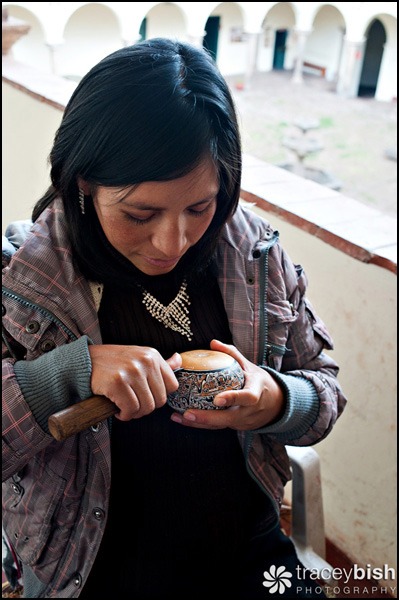
.jpg)
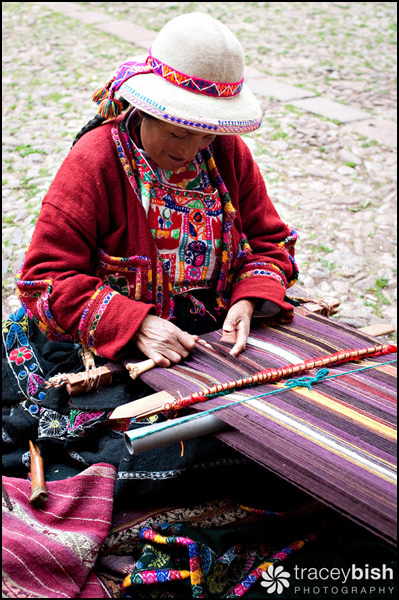
.jpg)
.jpg)
We stopped at Qorikancha which is a Catholic Church located among the remains of a Inca temple. The church removed some of the Inca site but left some walls which have been able to withstand earthquakes unlike the modern church. The Inca walls were built as trapezoids and some of the stones had 13 angles on the outer side. An entrance with many angles and cuts is representative of a very important place.
.jpg)
The Incas were masters of stone cutting and placement. This is all done without mortar it is interlocking rock cut to precision. Modern technology cannot replicate this.
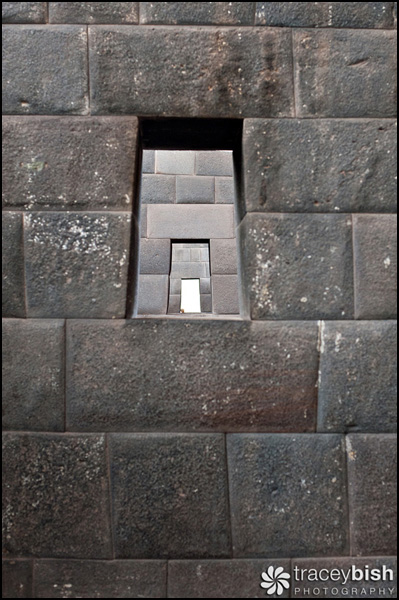
This is one of the smallest stone cuts and placements – why you ask? Because they can.
.jpg)
We went to a Inca ruin called Saqsayhuaman (otherwise pronounced as sexy-woman). The site is comprised of very large rocks formed in a zigzag shape representing the thunder and lighting Gods. The stones were cut and placed in a zig-zag shape for a practical reason too ~ earthquakes. This placement displaced the pressures on the stones and allowed them to move without falling down.
.jpg)
Look at the size of the rocks compared to the people. It is unknown how the Inca people moved these stones to this location. The largest stone weighs about 120 tons and was brought from 20 kilometers away. They figure it took 12 to 15 people to move a ton and they think roughly 20,000 people worked on this site for 77 years. It is simply amazing!
.jpg)
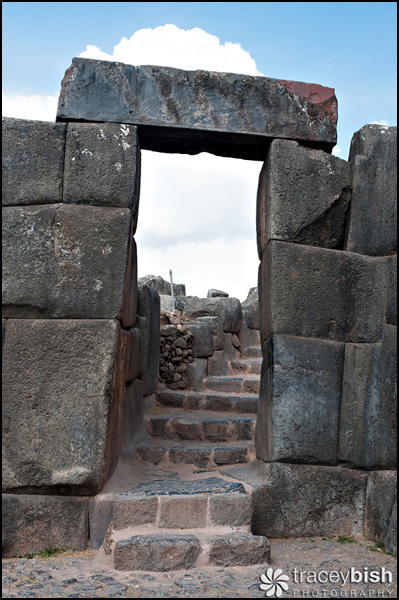
On the way to the Sacred Valley we stopped Awana Kancha which is a living museum to show visitors how the textiles are made from the wool to final product. They had Alpacas, Llamas and Vicunas in a petting zoo type environment.
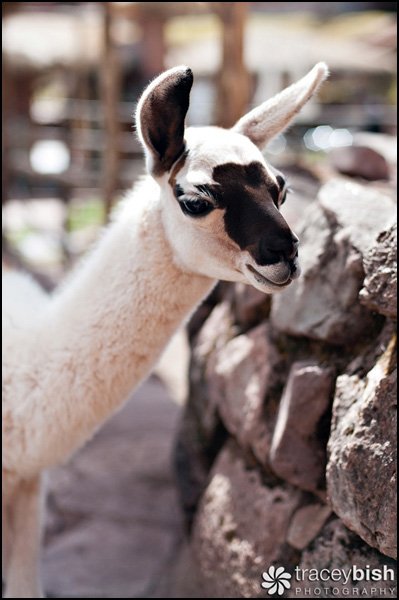
.jpg)
Here is a picture of the sheared wool of Alpacas and Llamas.
.jpg)
This man explained how to spin wool from hand and also about the native plants used to dye the wool. These ground up plants make the most beautiful colors.
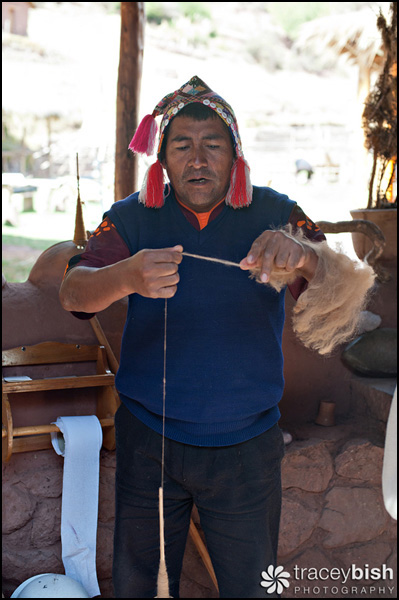
.jpg)
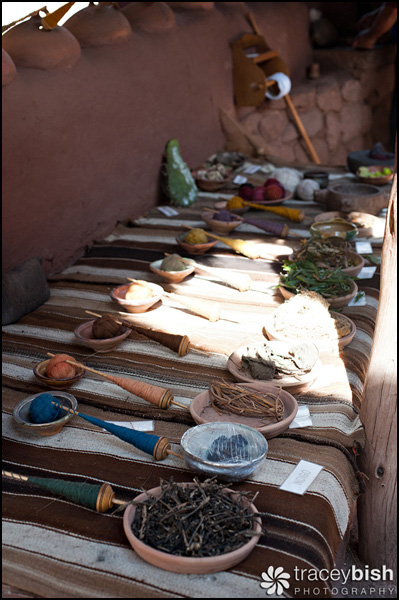
They explained that many of the weavers learn family patterns for the textiles when they are small children and usually have up to 10 patterns that they can readily do.
.jpg)
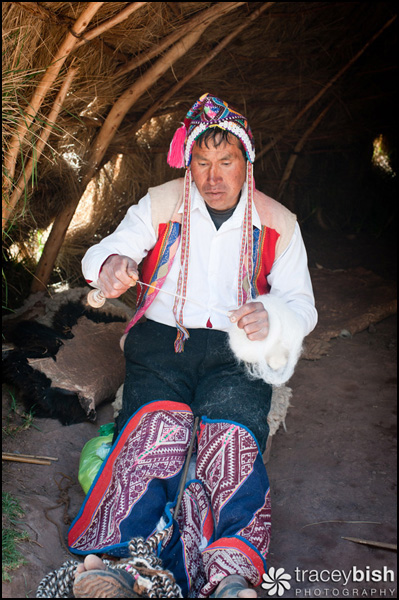
Next stop is the Sacred Valley.
.jpg)
We stopped at the Pisac Market which is the largest market in the area. It is both a food market and a handicraft market. You can find anything there and spend a lot of time and money! Silver is very prevalent in Peru just make sure you buy from a reputable dealer to make sure you are getting a high quality product. Below are pictures from the market and one of me & Ben with the town’s mayors.
.jpg)
.jpg)
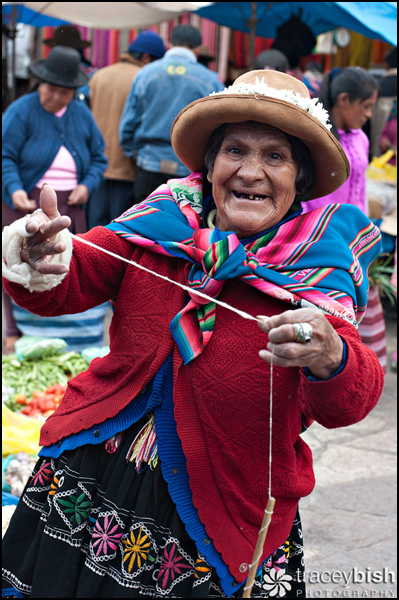
Potatoes – did you know that Peru has 3000 different varieties. So many more than our 3-4 in the supermarket. I think we are really missing out on diversity.
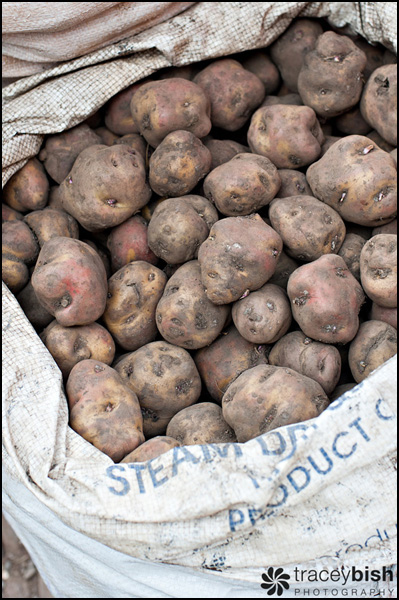
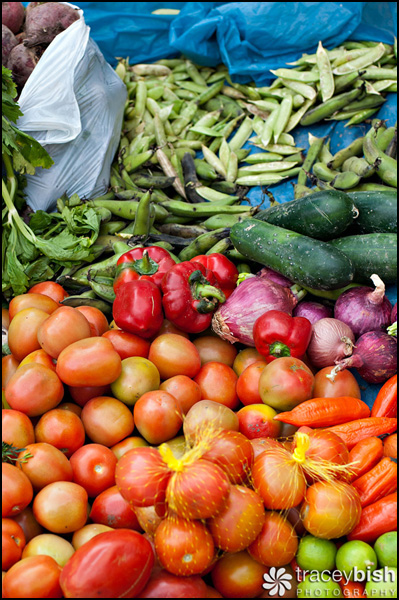
.jpg)
Corn – did you know that Peru has over 300 types of corn some edible some not. Again we only see a couple varieties in the stores – we are missing out with our monoculture.
.jpg)
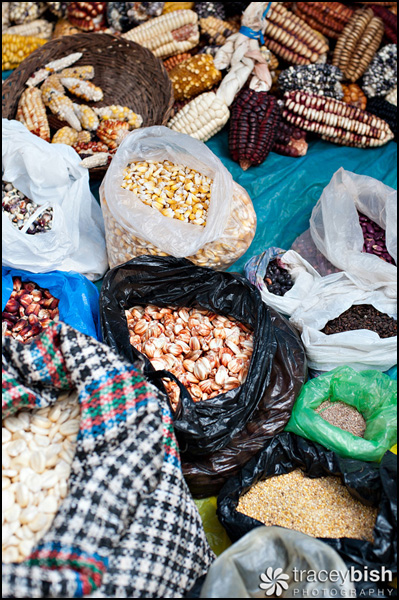
Natural plant dyes, even though the dye looks one color it usually produces a different color.
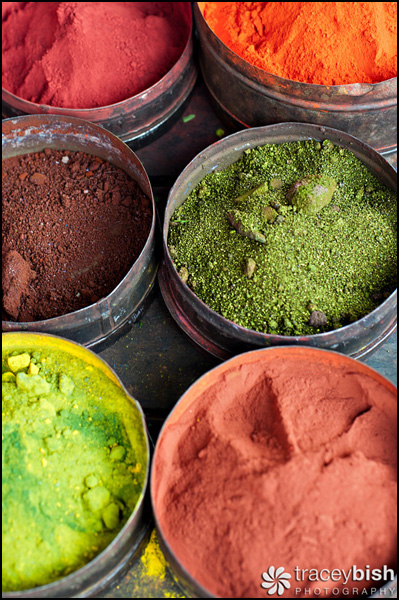
Guinea pigs are a holiday or special occasion dinner in Peru. At the market you could pick your guinea pig for lunch. We did try one for dinner at a different restaurant and it wasn’t too bad.
.jpg)
In the Sacred Valley Ollantaytambo is one of the most sacred Inca sites. It is one of the best preserved Inca sites since the Spanish didn’t come upon it. The terraces were used to grow food with each level providing a different microclimate. Each terrace is roughly 3-4 meters high and 6-8 meters wide, and were engineered to drain water properly.
.jpg)
.jpg)
A view looking up the valley from the top of Ollantaytammo.
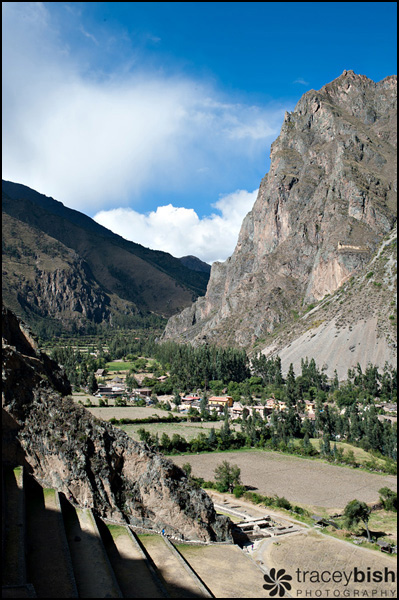
On the hillsides across from the main site there are buildings that were used to store food. They were built with the microclimates in mind for optimal food storage.
.jpg)
On our way back to Cusco we stopped at a chicharia which is a place that serves chicha otherwise known as corn beer. If you see a red flag hanging outside on a pole you know they have chicha ready to serve. Chicha is made from a certain type of sprouted corn that is fermented. We tried a strawberry chicha which is a little sweet and the traditional yellow chicha. It is good stuff!
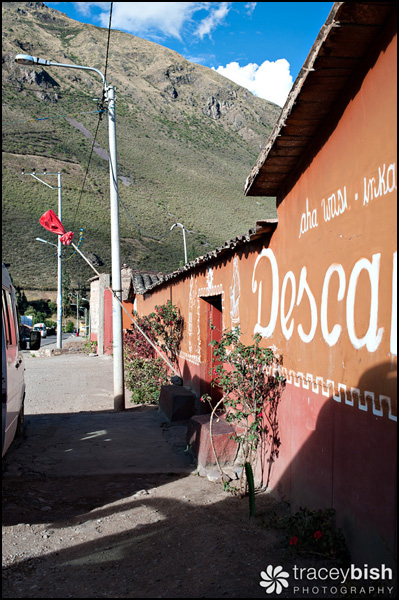
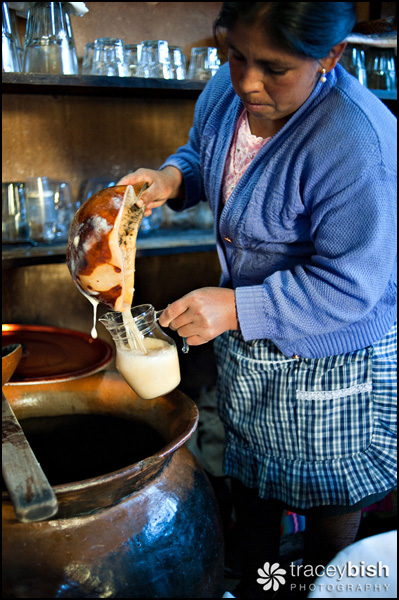
.jpg)
Here are a few sites of the country side taken from the tour bus.
.jpg)
.jpg)
When there is a landslide onto the road people make adobe bricks that they use to build or repair their homes.
.jpg)
Here is our welcome back into Cusco after a great day in the Sacred Valley.
.jpg)
The next blog post will be on the Inca Trail and Machu Picchu.

